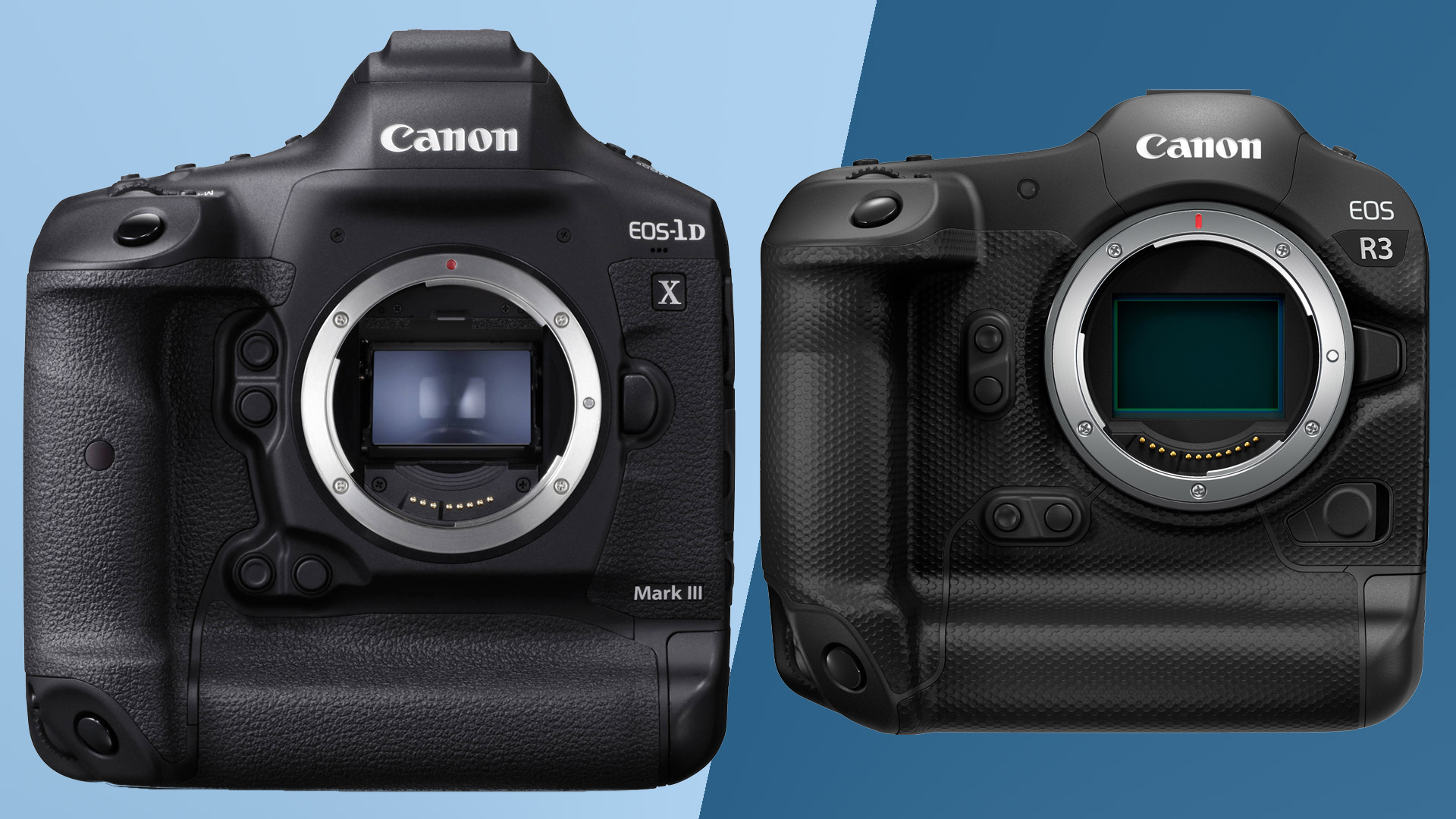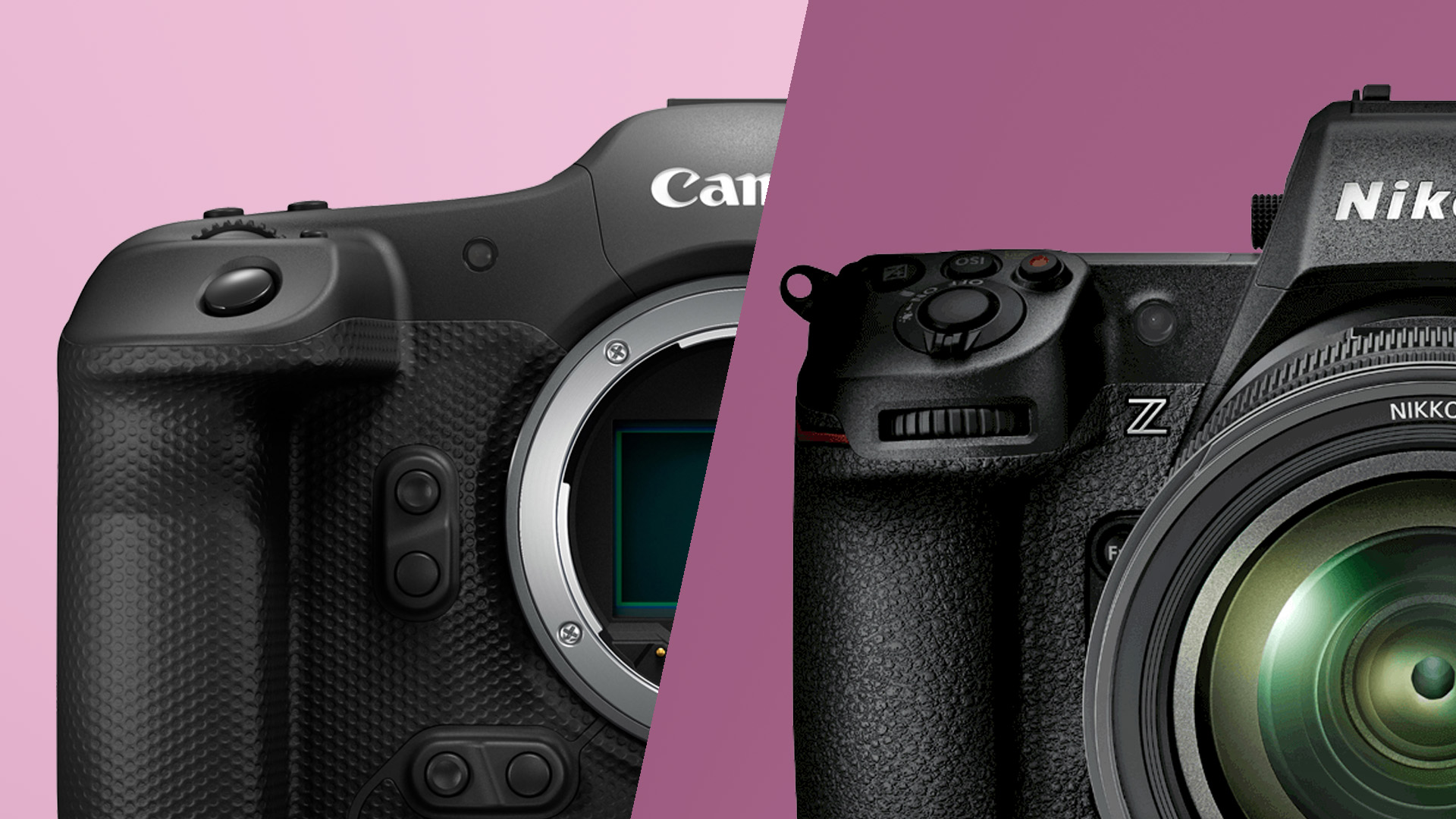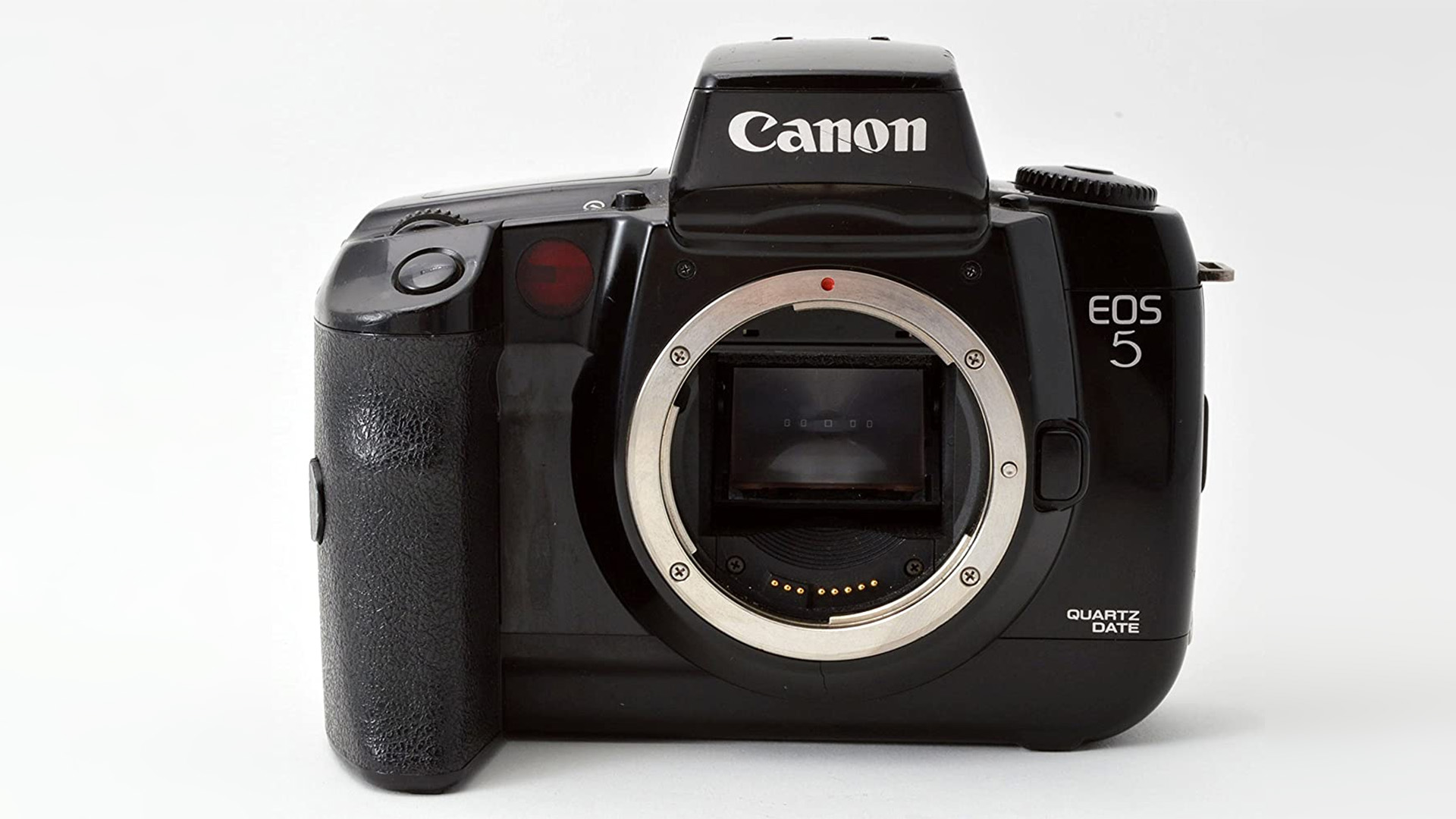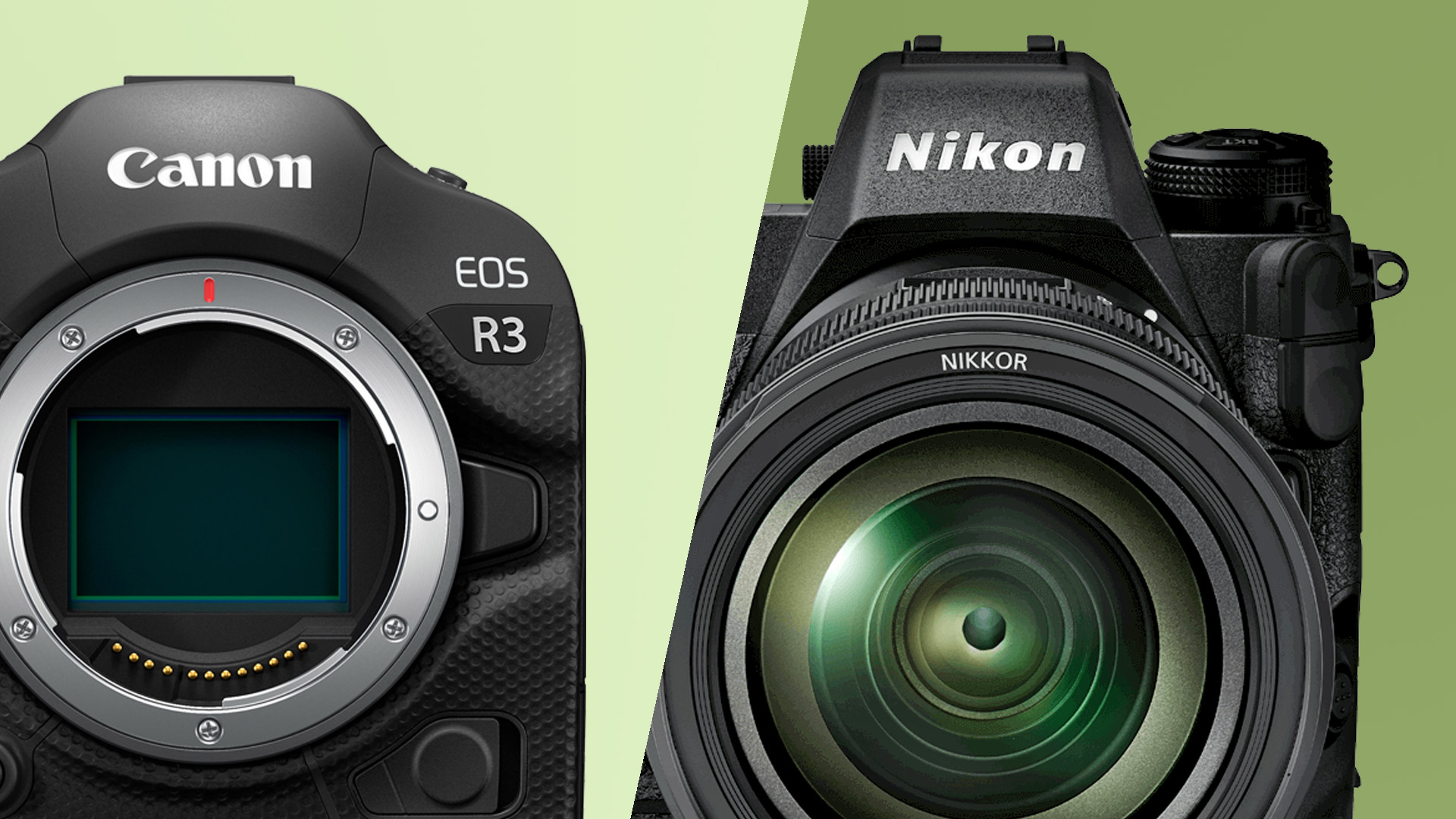Canon EOS R3 vs Nikon Z9: how are the mirrorless flagships shaping up?
The Canon EOS R3 and Nikon Z9 are incoming flagship mirrorless cameras that continue to dig the grave for DSLRs.
Both cameras are aimed at pro photographers who demand extremely fast burst performance, long battery lives, vertical grips and speedy AF. Everything DSLRs had over the earlier generations of mirrorless cameras, in other words.
The Canon EOS R3 and Nikon Z9 have been announced as “in development”. That means there's still a lot we don't know about both cameras. Still, a few features have been officially revealed and we know what they will look like, ahead of their full announcements later this year.
Which camera will be better? It’s far too early to be definitive, but it also isn't premature to make a few informed impressions. Here's how we think the Canon EOS R3 and Nikon Z9 are shaping up in this big battle of the traditional DSLR heavyweights.
- These are the best cameras you can buy right now
Design
The Canon EOS R3 and Nikon Z9 have one big thing in common: both are mirrorless cameras that are built in the mould of a pro DSLR.
They both have a vertical grip, which will also provide far better battery life than other mirrorless cameras, and are based on their DSLR counterparts.
Canon’s EOS R3 looks a bit like the Canon EOS-1D X Mark III (below). The grip pattern is different and it seems to be significantly smaller, but the control layout – to the extent we can see it – looks similar.

The Nikon’ Z9, meanwhile, has more than a passing resemblance to the Nikon D6 (below), with perhaps a greater divergence in the camera’s contours. The position of the visible dials and buttons is similar, though, as are the spots where the remote and flash terminals sit.
These camera giants want to make the transition from DSLRs to be as seamless as possible, because their pro followings depend on it.
Canon says the EOS R3 will have “pro” grade weather-sealing. Nikon didn’t mention it in its “in development” press release, but the Z9 will clearly have it, judging by the heavy duty seals on the front ports. It would be bizarre if a camera like this didn’t have full weather-sealing, too.

Sensor
The Nikon Z9 and Canon EOS R3 will have stacked BSI (backside-illuminated) CMOS sensors. This is the next step in sensor design after the BSI CMOS style used in, for example, the Nikon Z6 and Nikon Z7.
Vanilla CMOS sensors have wiring on top of the photosensitive surface, while BSI ones have wiring below it. Stacked CMOS chips have separate components for the photosensitive part and the wiring/memory. This makes it, in theory, the best design to use, if also the most expensive to manufacture.
Sony already used a stacked CMOS arrangement in the Sony Alpha A9, Sony Alpha A9 II and Sony Alpha A1, so it’s not quite as dramatic a tech leap as it may at first seem.
However, it will allow for fast burst shooting. Canon has already said that the EOS R3 will shoot at 30fps with autofocus. Still, despite rumors that it will be a 45MP camera, we yet don’t know its resolution, which will determine how impressed we are by this headline shooting speed.

Nikon approached its reveals from the other side. We don’t know its burst speed but we do know it will have a high-resolution sensor. It needs one of, at an absolute minimum, 39MP to enable the 8K video capture Nikon has already announced.
Sony has already proved 30fps burst at this sort of speed is entirely possible. The Sony Alpha A1 can shoot that fast, and it has a 50.1MP sensor.
We would not be surprised if the Nikon Z9 and Canon EOS R3 have similar-ish sensor resolutions and similar burst speeds. They need to keep up with Sony, after all, and stacked CMOS sensor design makes that possible.
Autofocus
Canon has talked about autofocus more than Nikon, and there is some funky stuff going on here.
The Canon EOS R3 will have eye-controlled autofocus when you use the viewfinder. You look at an area in the preview image, and it will focus on that spot. Mad, right?
This must involve using some form of camera that looks at the direction your pupil is pointing. Eye tracking of this kind is not new, but it’s a very ambitious feature. It’s only going to be worth using if it works well, and this is the sort of thing you can imagine not working well on day one. Fingers crossed.
It’s not the first time Canon has implemented this kind of feature. The 1992 Canon EOS 5 film camera had something similar. But that camera had five focus points, and we’re used to a few more than that these days. The Canon EOS R5 has 5,940 AF points in stills mode, and the EOS R3 seems likely to as well.

Canon also says the EOS R3 has a tweaked version of the EOS R5’s Dual Pixel CMOS AF II autofocus system, and a pre-release teaser video suggests it will have modes for tracking birds and doggies as well as people, their eyes and heads. That last part, head tracking, is important, ensuring the AF doesn’t go looking for another focus point when someone turns their face away from the camera, losing a lock on their eyes.
We have no specifics on the Nikon Z9’s AF, aside from some rumors published by Nikon Rumors that make nebulous claims about “improved AF” and “‘stunning’ AF tracking (better than the D6).”
Of course, even if Nikon did tell us more, it wouldn’t tell us which camera is better. You need a road test for that.
Video
It’s starting to seem like Canon has told us more about the EOS R3 here, but Nikon has at least announced the Nikon Z9 will have 8K video capture, like the Sony Alpha A1. This is not something you get in the Nikon Z6 II or Z7 II, and would be a big step up for the brand.
Canon has not confirmed if the EOS R3 shoots 8K video or not, but it will now seem odd if it doesn’t.
The Sony Alpha A1 offers similarly fast burst shooting and can shoot 8K. Canon’s EOS R5 shoots 8K video, and can already manage 20fps shooting.
You could argue Canon could only afford to leave out 8K video if it were able to burst shoot at well over 30fps, dropping the resolution to do so. And, well, it can’t.

Price
We don’t know how much the Canon EOS R3 or Nikon Z9 will cost. This detail likely won’t slip out until the official announcement.
However, we can make some predictions based on the current price of DSLR alternatives and the mirrorless models that will sit under these top-end cameras.
The Canon EOS R3 will sit above the $3,899 / £3,499 / AU$6,899 Canon EOS R5 and below or adjacent to the $6,499 / £6,499 / AU$9,999 EOS-1D X Mark III.
The Nikon Z9 will sit above the $2,999 / £2,999 / AU$5,499 Nikon Z7 II and, again, similar to or below the $6,496 / £6,299 / AU $10,378 Nikon D6.
There is arguably little reason for Nikon and Canon to go below those higher prices when the Sony Alpha A1 already costs $6,499/ £6,499 / AU$10,499. Make no mistake, these will be expensive cameras.

Early verdict
Canon and Nikon have released info on different areas of their exciting flagship cameras. We would not be surprised if the two end up converging at a similar point, one where the headline features are 30fps high resolution burst shooting, long battery lives and 8K video capture.
The Canon EOS R3 has autofocus control via your eyeballs, which is an eye-catching feature we're unlikely to see on the Z9. But it’ll be useless unless it works better than our cynicism makes us imagine it will.
We’ll have to wait a little longer to see how this one plays out, but one thing's for sure – both cameras are shaping up to be Canon and Nikon's most powerful mirrorless beasts so far.
- These are the best professional cameras you can buy right now
from TechRadar - All the latest technology news https://ift.tt/2QrTV3H

Comments
Post a Comment